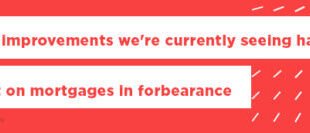
Let the house hunting begin! If you’ve decided to ditch the rental game and spring for a home purchase, you’re not alone. New homebuyers everywhere are taking advantage of low mortgage interest rates.
What if you don’t want a traditional sale. Have you considered buying a preforeclosure home? Keep reading to find out what you need to know.
Check Rates: Check Today’s Rates
What is Preforeclosure?
Preforeclosure means the homeowner is behind on their mortgage payments. The mortgage holder, or lender, then files a notice of default. Between a notice of default and foreclosure court proceedings, the house maintains a preforeclosure status. Preforeclosure can last anywhere from weeks to a year.
During this time, many homeowners try to negotiate payment options with their lender. Doing so will keep the lender from costly foreclosure processes. Working out a payment agreement will also allow the homeowner to stay in their home and save their credit.
Another way to keep a home out of foreclosure is to sell while it’s in preforeclosure. Because the homeowner and lender are eager to avoid a foreclosure process, they’re often willing to sell the home at a reduced price.
1. Research the Property
Notices of default are public record. As such, they can be found through the county recorder’s office or tax assessor’s office. If you’re ok paying for a search, you can even subscribe to the county’s legal newspaper.
If you’re planning to live in the preforeclosure home, you need to check out the neighborhood. What’s the value of other properties around it? Is it a renaissance area? Maybe the house is the neighborhood eyesore, and you’re planning to make home improvements.
Preforeclosure properties are often in very good shape, and this could be a way to get your dream home at a discount. By using county records and tax assessor’s information, you should be able to determine the purchase price of the home.
By looking at recent sales in the neighborhood, you can find out how much neighboring homes are retaining or increasing value. You definitely want to drive by the place but don’t get too nosey. It’s possible the occupants are still living there. Snooping around someone’s home may not be the first impression you want to give!
2. Line up Your Financing
Securing your financing is vital. Checking out several financial institutions will allow you to get the best interest rate. Once you’ve secured funding, as your lender for a preapproval letter and make copies of it.
Next, you need to determine your budget. Just because the bank says you can afford a monthly payment of $ 1,500.00 doesn’t mean you should. Crunch the numbers in your budget to determine how much you can realistically spend on a home.
Don’t Need Financing?
If you have enough cash to pay for the property, you’re at an excellent advantage! Offering cash for a preforeclosure will allow you to make a lower offer and remove all contingencies from your offer.
Most home sales involve mortgage lenders. This means if a buyer’s financing falls through for some reason, the home sale is off. Removing this contingency from a home sale will make your offer much more attractive.
3. for Sale or Not for Sale
Many homes in preforeclosure are not for sale. Homeowners are likely still living in the house. This means you should exercise great tact when approaching the situation.
Some homeowners will be happy to negotiate a sale to avoid wrecking their credit score. Others may feel offended and embarrassed and won’t entertain the idea of negotiating a sale. Either way, how you approach a potential sale is important.
Write a Letter
Consider sending a personalized letter. This is a non-threatening way to approach those living in a preforeclosure home. The letter should include your name and why you’re interested in the home. Honesty and transparency are extremely important.
If you plan to live in the home and raise your family there, let them know. If you plan to flip it and sell for a profit, say so. Maybe you’d like to turn it into a rental property. Would the homeowners be interested in staying and renting from you?
Include your contact information and the best times to reach you. A respectfully written and honest letter will communicate your intentions. Letters also avoid putting too much pressure on the homeowners.
Speak to the Homeowners
If you’re more comfortable with a conversation, give the homeowners a call. You should plan out what to say and write down your main talking points before dialing them up.
The same rules apply here. Tell them how you found their home and information. Next, ask them if they have some time to visit with you about the potential sale of their home.
If they’re open to it, tell them a little about yourself and why you’d like to buy their preforeclosure home. Ask to set up a time to meet and discuss details.
Knock on the Door
If you decide to show up unannounced, your reactions may not be as favorable. Some homeowners may not like the surprise visit.
If you decide to show up in person, bring a letter with you. Expecting someone to discuss their financial distress with you on the spot isn’t a tactful approach.
Use this opportunity to introduce yourself, deliver a letter, and let them get along with their day. This lets the homeowner put a face to your letter and allows them to process the request on their own.
4. Go Back to Your Lender
Once you’ve reached an agreement with a seller, your financial institution needs specifics.
A lending bank or credit union will ask for the following documents. Remember to budget for fees related to this documentation process.
- Purchase agreement contract signed by both parties
- Property details
- An appraisal of the property
- Mortgage application and fee
- Proof of a source for your down payment
- A list of your current assets and liabilities. Other loans or debt you may have.
Getting your financial ducks in a row is essential to buying preforeclosure homes. You won’t be able to secure a loan without doing these things first.
Once all parties approve the process, you’ll receive a commitment letter. This is your physical proof of confirmation that you are qualified to buy this preforeclosure home.
Get pre-approved with our network of lenders
Enlist a Pro
Purchasing your first home involves a lot of details. Hiring a professional to make sure you’ve completed all the necessary documents is a great idea. Some real estate agents specialize in preforeclosure homes and can walk you through the process.
If you don’t hire a realtor, find an attorney who knows how to buy a preforeclosure home. A legal expert will make sure you’re not missing important steps to the sale process.
5. Closing Day
This is the day your ownership becomes final. Once you have a commitment letter, your hired professional will work with a title company to determine a closing date. For conventional home sales, this can take up to 90 days; for cash home sales, the timeline is usually shorter.
It’s important to have your professional look over all documents before you sign them. Once you’ve signed documents at closing, you are the official owner of your home.
6. Before Moving In
Congratulations! You’ve bought a preforeclosure home! Before you start uploading and unpacking, you’ll want to take care of a few things.
Change the Locks
The house is now yours. To reduce the risk of unwanted foot traffic through your home, it’s best to start fresh with new locks.
Replace the Flooring
If you’re planning to update or replace the flooring, do so before moving in. Most flooring installers charge extra for moving furniture. If you plan to do some remodeling yourself, it’s a great idea to get the dust flying before your stuff is in there.
Clean It Out
An empty home is much easier to clean. Consider hiring a professional cleaning company if you don’t want to do the job yourself.
Can I Buy a Preforeclosure Home?
The process of buying a preforeclosure home is more complicated than traditional sales.
However, your savings can make it worth your while.
Many preforeclosure homes sell for much less than their market retail value.



